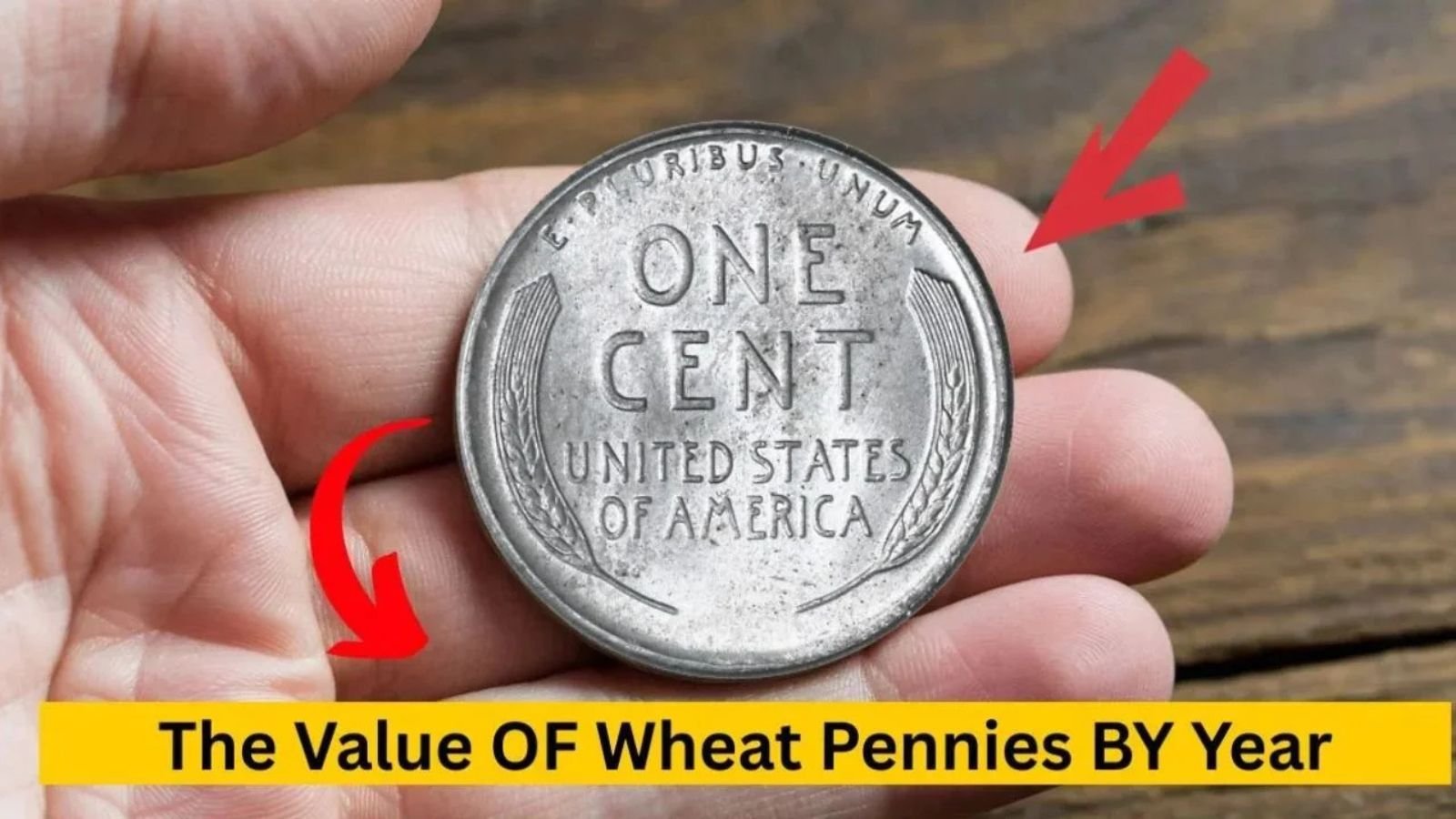When you hold a Wheat Penny in your hand, you’re holding more than just a small copper coin. You’re holding a piece of American history that has fascinated collectors for generations. Officially called Lincoln Wheat Cents, these coins were minted from 1909 to 1958 and remain one of the most beloved collectibles in the numismatic world. What makes them so popular is not only their classic design but also the wide range of values they carry—from a few cents to several thousands of dollars.
Whether you’ve stumbled upon one in pocket change, inherited a coin collection, or actively hunt them down at flea markets and coin shows, understanding what makes a Wheat Penny valuable is the first step to appreciating its worth. Year of minting, condition, mint marks, and even minting errors all play a critical role in determining how much a coin is worth today.
$1,702 Stimulus Check in August: Last Chance to Apply for PDF closes soon
A Short History of the Wheat Penny
The Wheat Penny made its debut in 1909, marking a historic shift in American coinage. That year was the 100th anniversary of Abraham Lincoln’s birth, and the U.S. Mint wanted to honor the nation’s 16th president. Designed by Victor David Brenner, the coin broke tradition by becoming the first U.S. circulating coin to feature a real person rather than an allegorical figure like Liberty.
The obverse displays Lincoln’s portrait, while the reverse features two stylized wheat stalks framing the words “ONE CENT” and “UNITED STATES OF AMERICA.” This simple but iconic design quickly earned the nickname Wheat Penny. The design endured nearly five decades before being replaced by the Lincoln Memorial reverse in 1959.
The coin was primarily struck in copper, although World War II brought a temporary shift in 1943 when the U.S. Mint produced steel pennies to conserve copper for the war effort. This steel version is now one of the most famous and instantly recognizable Wheat Pennies.
Why the Year Matters in Wheat Penny Values
One of the most important things to know as a collector is that not all Wheat Pennies are created equal. The year a coin was minted has a direct impact on its rarity and thus its value.
-
Some years saw extremely high mintages, meaning millions of coins were produced. These are still common today and worth only a small premium above face value.
-
Other years, however, had much lower mintages, making those coins scarce in the marketplace.
-
Certain years are also famous for unusual variations or striking errors, which instantly boost a coin’s appeal and value.
For example, a Wheat Penny minted in 1944 may only bring a small return unless it is in pristine condition. On the other hand, the legendary 1909-S VDB—a coin with limited mintage and the designer’s initials—is highly sought after and often sells for thousands.
Condition: The Key to Unlocking Value
Even if you have a rare year, the condition of your Wheat Penny is just as critical. Collectors and grading services evaluate coins based on wear, scratches, and overall preservation. A coin that has circulated for decades, passing through countless hands, will show its age.
-
Good to Fine Condition: These coins are heavily worn, and while still collectible, they fetch modest prices.
-
Very Fine to Extremely Fine: Some design details remain visible, and the coin shows less wear. Value begins to climb.
-
Uncirculated (Mint State): These are coins that have been preserved almost perfectly since minting. They can sell for multiples higher than the same coin in worn condition.
Collectors often use grading scales, ranging from Poor (P-1) to Mint State (MS-70), to describe condition. A common Wheat Penny might only bring $0.10 in circulated condition, but the same coin in Mint State could be worth $5 or more. Multiply that across rare years, and you can see why condition matters so much.
Average Wheat Penny Values by Year
Below is a reference guide of average values for some significant Wheat Penny issues in circulated condition. Remember, prices rise substantially for uncirculated examples or those with certified grades:
| Year | Average Circulated Value | Key Notes |
|---|---|---|
| 1909-S VDB | $800 – $1,200 | Extremely rare, designer’s initials, low mintage |
| 1914-D | $200 – $300 | Scarce Denver mint issue |
| 1922 No D | $500 – $800 | Famous error, missing mint mark |
| 1931-S | $70 – $100 | One of the lowest mintages in the series |
| 1943 Steel | $0.20 – $2 | Struck in zinc-coated steel during WWII |
| 1955 Doubled Die | $1,000+ | Legendary error with doubled lettering |
This table is a starting point, but actual prices can vary depending on demand, coin shows, auctions, and online marketplaces.
Understanding Mint Marks
Mint marks are small letters on coins that identify where they were produced. For Wheat Pennies, this detail can dramatically affect value:
-
No Mint Mark: Indicates Philadelphia Mint. These are often the most common.
-
D: Denver Mint. Some Denver issues are extremely rare, such as the 1914-D.
-
S: San Francisco Mint. Certain years like the 1909-S and 1931-S carry high premiums.
For collectors, spotting the mint mark is as important as checking the date. Two coins from the same year can have drastically different values based on whether they carry a “D” or an “S.”
Rare Errors That Boost Wheat Penny Value
Errors are one of the most exciting aspects of collecting Wheat Pennies. These are not intentional design variations but mistakes made during the minting process. Because they are scarce, collectors often pay high premiums.
Some famous errors include:
-
1955 Doubled Die: The date and lettering show clear doubling, making it one of the most famous U.S. error coins.
-
1922 No D: A Denver-minted coin without its mint mark due to a filled die.
-
1943 Copper Wheat Penny: A few were mistakenly struck in copper instead of steel, and these can be worth tens of thousands of dollars.
Finding one of these errors is like hitting the jackpot for collectors.
Tips for New Wheat Penny Collectors
If you’re new to collecting, the world of Wheat Pennies can feel overwhelming. Here are some practical steps to get started:
-
Examine Every Penny You Encounter – Even today, Wheat Pennies occasionally appear in circulation, though it’s rare.
-
Learn Key Dates and Errors – Familiarize yourself with the most valuable years so you don’t accidentally overlook a gem.
-
Use Proper Storage – Place coins in protective holders or albums to prevent further wear.
-
Avoid Cleaning Coins – Cleaning can reduce value significantly. Collectors prefer coins in natural condition.
-
Reference Reputable Guides – Books, online resources, and coin dealers can provide updated pricing.
Building a collection takes patience, but even starting with common dates helps you learn the basics.
The Future Value of Wheat Pennies
While not every Wheat Penny will make you rich, they hold both sentimental and investment value. As more collectors enter the hobby and fewer high-quality coins remain in circulation, values tend to rise gradually over time. Rare dates and errors are almost guaranteed to continue appreciating because of their limited supply.
Moreover, beyond financial worth, Wheat Pennies connect us to history. Each coin tells a story—whether about Lincoln’s legacy, wartime resource shortages, or the evolution of U.S. coin design. For many collectors, that historical connection is just as valuable as the price tag.
FAQs About Wheat Pennies
Q. What is the rarest Wheat Penny?
The 1909-S VDB is often considered the rarest and most iconic. With low mintage and designer initials, it remains highly prized.
Q. Are steel Wheat Pennies valuable?
Most 1943 steel pennies are common, worth just a small premium. However, the rare copper 1943 Wheat Penny can fetch tens of thousands at auction.
Q. How do I know if my Wheat Penny is valuable?
Check the year, mint mark, and condition. Compare with a coin value guide or have it appraised by a professional dealer.
Q. Should I clean my Wheat Pennies to make them look better?
No. Cleaning can actually reduce value because it alters the coin’s natural patina. Collectors prefer original surfaces.
Conclusion: A Small Coin with Big History
The Wheat Penny is more than just an old copper coin—it’s a symbol of American history, craftsmanship, and heritage. Its humble face value of one cent belies the stories it carries and the excitement it brings to collectors. From the rare 1909-S VDB to the wartime 1943 steel issue, every Wheat Penny has a tale to tell.
Whether you collect them for nostalgia, investment, or sheer curiosity, these coins continue to grow in value and significance. For some, it’s about chasing rare errors and elusive dates; for others, it’s about appreciating the artistry and history embedded in a coin that was once so ordinary. Either way, the Wheat Penny proves that even the smallest pieces of change can hold the greatest treasures.
Some Important Link
| Download News APP | Click Here |
| WhatsApp Group | Click Here |
| Home Page | Click Here |





